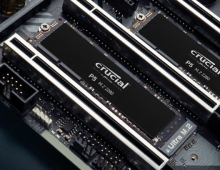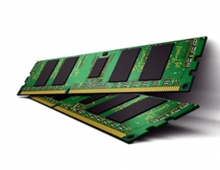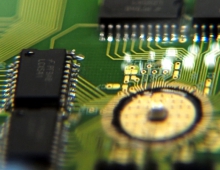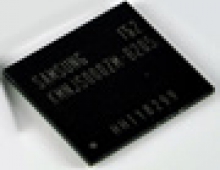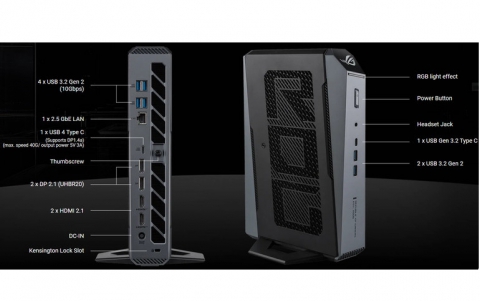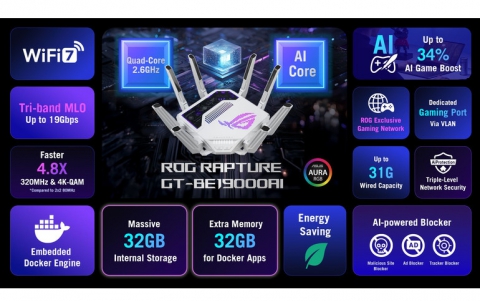
Flash Memory Chip Demand to Explode on Low Prices
Roaring demand for flash memory chips, popular in hot-selling music players and digital cameras, will accelerate later this year, but prices will stay weak as industry leader Samsung holds prices down.
Samsung Electronics, currently controls nearly 60 percent of the NAND flash market, and is cutting
prices in a bid to woo electronics makers to use the erasable and rewritable memory chips and undermine
emerging rivals.
"Demand for NAND flash is going to be explosive in the run-up toward the Christmas holiday season, driven largely by MP3 players and digital cameras," said iSuppli analyst Nam Hyung Kim.
The global NAND flash market is expected to grow by 65 percent to $10.9 billion in 2007, according to research firm iSuppli. During the period, overall microchip shipments are likely to expand only 24 percent, industry body World Semiconductor Trade Statistics said.
Most NAND chips are built into memory cards or USB memory products which consumers use to store images, video and music.
NAND flash was used mainly for digital cameras, but the launch of Apple Computer Inc.'s popular iPod Shuffle and other flash-based MP3 players have given the chip an additional boost.
Demand will also escalate as more mobile phone makers include MP3 features in their high-end photo-snapping cellphones.
Apple's plans to buy as much as 40 percent of Samsung's flash memory output in the second half for its new 4-gigabyte version of the iPod Mini, to be launched this holiday season, is also expected to create an acute shortage in the NAND flash market going into 2006, said Deutsche Bank analyst D.J. Yook.
Samsung said NAND has been under-supplied for most of 2005, except for a short period at the start of the April-June quarter.
"The NAND market should be very tight until the end of 2006, due to entry of next-generation devices like 2-gigabyte and 4-gigabyte MP3 players, high density memory cards and 3G (third-generation) handsets," said a Samsung spokesman.
Tracking market leader Samsung is Japan's Toshiba Corp. , with a 28 percent share. South Korea's Hynix Semiconductor Inc. and U.S.-based Micron Technology Inc. also make flash chips.
Despite the strong demand, analysts and industry officials expect the price to fall further as Samsung cuts prices.
Samsung said shrinking chip geometries have helped to lower production costs. Shifting from 90-nanometre 2-gigabit NAND chips to 70-nanometre 4-gigabit chips cuts costs by 40 percent.
As Samsung slashes prices, rival Toshiba and new entrant Hynix will have to follow suit to keep their market shares.
Unlike Samsung, which also makes dynamic random access memory (DRAM) chips used in most personal computers, Toshiba is more vulnerable to NAND price erosion, analysts said.
Toshiba last month raised its semiconductor capital spending plan for the year to March 2006 by 12 percent to 169 billion yen to carry forward planned capacity increases at its new NAND plant that processes 300-mm silicon wafers.
"Demand for NAND flash is going to be explosive in the run-up toward the Christmas holiday season, driven largely by MP3 players and digital cameras," said iSuppli analyst Nam Hyung Kim.
The global NAND flash market is expected to grow by 65 percent to $10.9 billion in 2007, according to research firm iSuppli. During the period, overall microchip shipments are likely to expand only 24 percent, industry body World Semiconductor Trade Statistics said.
Most NAND chips are built into memory cards or USB memory products which consumers use to store images, video and music.
NAND flash was used mainly for digital cameras, but the launch of Apple Computer Inc.'s popular iPod Shuffle and other flash-based MP3 players have given the chip an additional boost.
Demand will also escalate as more mobile phone makers include MP3 features in their high-end photo-snapping cellphones.
Apple's plans to buy as much as 40 percent of Samsung's flash memory output in the second half for its new 4-gigabyte version of the iPod Mini, to be launched this holiday season, is also expected to create an acute shortage in the NAND flash market going into 2006, said Deutsche Bank analyst D.J. Yook.
Samsung said NAND has been under-supplied for most of 2005, except for a short period at the start of the April-June quarter.
"The NAND market should be very tight until the end of 2006, due to entry of next-generation devices like 2-gigabyte and 4-gigabyte MP3 players, high density memory cards and 3G (third-generation) handsets," said a Samsung spokesman.
Tracking market leader Samsung is Japan's Toshiba Corp. , with a 28 percent share. South Korea's Hynix Semiconductor Inc. and U.S.-based Micron Technology Inc. also make flash chips.
Despite the strong demand, analysts and industry officials expect the price to fall further as Samsung cuts prices.
Samsung said shrinking chip geometries have helped to lower production costs. Shifting from 90-nanometre 2-gigabit NAND chips to 70-nanometre 4-gigabit chips cuts costs by 40 percent.
As Samsung slashes prices, rival Toshiba and new entrant Hynix will have to follow suit to keep their market shares.
Unlike Samsung, which also makes dynamic random access memory (DRAM) chips used in most personal computers, Toshiba is more vulnerable to NAND price erosion, analysts said.
Toshiba last month raised its semiconductor capital spending plan for the year to March 2006 by 12 percent to 169 billion yen to carry forward planned capacity increases at its new NAND plant that processes 300-mm silicon wafers.

